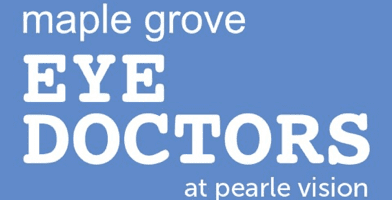Some vision problems are genetic, but others are influenced by the environment and your lifestyle.
Thick curly hair, a distinct nose shape, disarming blue eyes – these are some of the things that run in families. Unfortunately, so do nearsightedness and far-sightedness. But not all eye problems are genetic; they may be caused by environmental issues too.
Healthy living is an integral part of maintaining a healthy vision as you age. The healthier you are, the better chance you have of avoiding damage to your eyesight.
It is crucial to understand how genes, environmental issues, and lifestyle habits can affect your eye health.
Many of the leading causes of blindness are linked to genetic factors, according to Dr. Yolandie Coetzee from Envision Sight. Inherited eye diseases cause more than 60% of blindness in infants. These include:
- Congenital cataracts
- Congenital glaucoma
- Retinal degeneration
- Optic atrophy
- Eye malfunctions
- Near-sightedness and farsightedness
- Fundus dystrophies (a condition characterized by the loss of central vision)
However, she points out that it is almost impossible to determine whether genetics or environmental factors are to blame for eye disorders as the issue is so complex.
“In adults, diseases like glaucoma and age-related macular degeneration – both of which are leading causes of blindness – can be the result of a mix of genetic and environmental factors. Amblyopia (lazy eye) and strabismus (cross-eye) might also have mixed causes and may show up in early childhood. However, they have greater chances of recovery with surgery, vision training, and/ or special eyewear. Diabetes – which may be caused by a combination of genetic makeup, family history, health and environmental factors, such as lifestyle – is a leading cause of eye diseases including diabetic retinopathy, diabetic macular edema (DME), cataracts, and glaucoma.”
If you are curious about how your family history can impact you or your children, schedule an appointment with us! It can certainly help you prevent a lot of problems early on. Routine eye exams are again a helpful tool for vision care. Kids can have their first eye exam as early as six months. After that, yearly eye exams should continue for life – you’ll be grateful for this.
Click here to discover the aging process of the eyes – and how you can slow it down.
How will your family’s eyesight history affect your children?
If you are curious about your family’s vision history and how it might affect your children, see an eye doctor. “You can also look at the prevalence of eye disease in your family,” says Coetzee. “Genes for certain diseases have been extensively mapped to gene testing and would be a great predictor of a condition such as inherited retinal disease.” Researchers have mapped several genetic risk factors for glaucoma.
Genetics
These genes were found by genetically sequencing the DNA of families with the genetic condition. “It’s extremely complex and is based on finding the same needle in several haystacks,” Coetzee explains. “To make it even more complex, the penetrance (the extent to which a particular gene or set of genes is expressed in the phenotypes of individuals carrying it) may vary. This means that you will not necessarily have the disease even if you have the gene. According to a US study on glaucoma, genetic testing can be a powerful tool in specific diseases like familial juvenile open-angle glaucoma, where care can be better optimized.
There are approximately 250 genes that cause inherited retinal diseases. Myopia, glaucoma, acute macular degeneration, and diabetes are the leading causes of vision loss. They all have a large genetic component, according to Coetzee. “Although not much can be done to prevent the inheritance of a gene, research in the field of gene therapy has exploded in the last 15 years. The human retina is ideal for the assessment of gene and cell therapies because of its accessibility for monitoring, imaging, and surgical manipulation.” Luxturna, a one-time gene therapy treatment, was approved by the US Food and Drug Administration in December 2017. This is used to improve vision in patients with genetic vision loss due to Leber congenital amaurosis or retinitis pigmentosa, both of which are retinal dystrophies. Clinical trials involving retinal gene therapy are creating hope for future therapies for other retinal diseases.
How Diet, Lifestyle, and Environment May Affect Eye Health
Although poor eyesight is often hereditary, the number of people with nearsightedness – which has a strong genetic component – has almost doubled in the past decade. Coetzee says that time spent in front of computers and cell phones could significantly contribute to eye issues such as nearsightedness.
Engaging in activities that require prolonged close-up focusing, such as reading, using digital devices, or working at a computer for extended periods, can contribute to the development or progression of myopia.
According to a few epidemiology studies, spending time outdoors in early childhood also reduces the onset of myopia, or nearsightedness, which has become more prevalent in recent years. This is just one example of how lifestyle rather than genetics may affect your eye health.

Incorrect reading or working postures, improper lighting, and inadequate viewing distances can strain the eyes and lead to eye discomfort, blurred vision, and eyestrain. Overexposure to ultraviolet (UV) radiation from the sun without appropriate eye protection may increase the risk of certain eye conditions like cataracts and age-related macular degeneration. In addition, eye injuries resulting from activities like sports, DIY projects, or workplace hazards can cause vision problems or damage to the eyes.
Coetzee further advises that, in general, a healthy lifestyle is important for maintaining good eyesight. A balanced diet that includes essential nutrients like vitamins C and E, omega-3 fatty acids, lutein, zeaxanthin, and zinc can support good eye health, potentially reducing the risk of certain eye diseases. A poor diet, smoking, and unhealthy BMI (body mass index) may increase your chances of developing age-related macular degeneration. Smoking is associated with an increased risk of several eye conditions, including cataracts, macular degeneration, and optic nerve damage. That is why it is important to follow a healthy diet, manage body weight, not smoke, and exercise regularly.
For patients with glaucoma, a vegan diet and regular exercise can also help lower the pressure on the eyes. The antioxidants found in fruits and vegetables can help reduce vision loss related to aging. It is also important to take preventative action. This can include protecting your eyes from the sun’s UV rays to avoid the development of cataracts.
How else can you prevent eye disease?
-
While genetic factors may be beyond your control, making healthy lifestyle choices and adopting good eye care practices can help maintain good vision. These can, in fact, reduce the risk or progression of specific vision problems. That is the best you can do and is in your control – a good diet, regular checkups, exercise, and taking prescribed medications.
How else can you keep a check on your eye health?
- Find out whether your medical insurance covers genetic testing.
- Have regular eye exams to look for changes in blood vessels or retinas that indicate diabetic retinopathy.
- Have the health of your eyes tested routinely. In this way, you can prevent yourself from having future problems. Schedule your eye exam now.
It is clear – your genes have a great influence on your eyesight. Even the environment and your lifestyle may have a big role in maintaining your vision health. So, the more information your eye specialist has about your genetic makeup and environmental impact, the better solutions they can suggest to minimize any diseases before they worsen.






